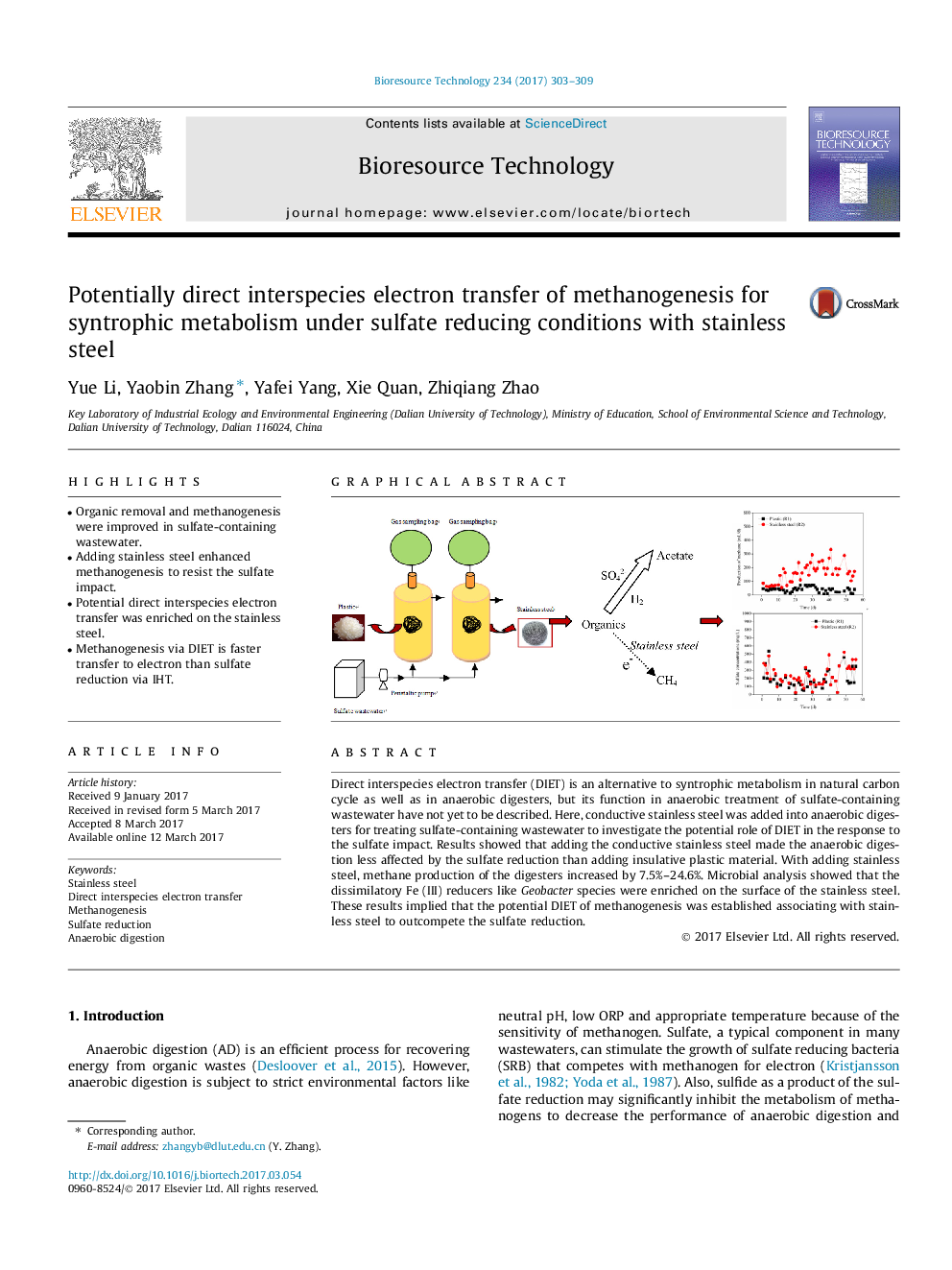| Article ID | Journal | Published Year | Pages | File Type |
|---|---|---|---|---|
| 4997309 | Bioresource Technology | 2017 | 7 Pages |
â¢Organic removal and methanogenesis were improved in sulfate-containing wastewater.â¢Adding stainless steel enhanced methanogenesis to resist the sulfate impact.â¢Potential direct interspecies electron transfer was enriched on the stainless steel.â¢Methanogenesis via DIET is faster transfer to electron than sulfate reduction via IHT.
Direct interspecies electron transfer (DIET) is an alternative to syntrophic metabolism in natural carbon cycle as well as in anaerobic digesters, but its function in anaerobic treatment of sulfate-containing wastewater have not yet to be described. Here, conductive stainless steel was added into anaerobic digesters for treating sulfate-containing wastewater to investigate the potential role of DIET in the response to the sulfate impact. Results showed that adding the conductive stainless steel made the anaerobic digestion less affected by the sulfate reduction than adding insulative plastic material. With adding stainless steel, methane production of the digesters increased by 7.5%-24.6%. Microbial analysis showed that the dissimilatory Fe (III) reducers like Geobacter species were enriched on the surface of the stainless steel. These results implied that the potential DIET of methanogenesis was established associating with stainless steel to outcompete the sulfate reduction.
Graphical abstractDownload high-res image (166KB)Download full-size image
